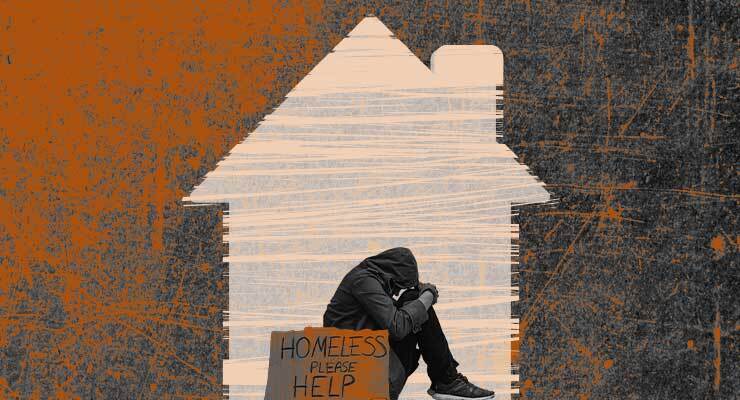
Following a two-year slowdown in housing construction, the boom is back, with a record number of houses being developed. But it’s not likely to fix Australia’s shortage of affordable or social housing, despite government investment. Labor, land and material shortages continue to slow down construction, while interest rates will keep rental costs high.
While more investment is always needed, simply throwing money at more housing won’t fix Australia’s housing crisis.
Supply issues hamper progress
COVID-19 supply chain disruptions coupled with the invasion of Ukraine have resulted in shortages of migrant workers and materials like timber in Australia, with some building firms focusing on large development contracts over individual homes. There’s a two-year backlog of construction that’s only now being addressed.
Land, labour and materials are all in short supply across the country, Housing Industry Association Chief Economist Tim Reardon tells Crikey — and it’s not clear which shortage is more dire.
“We have a record number of homes approved and not yet commenced, and a record number of homes sold but not yet approved. So there’s an enormous volume of work in the pipeline,” Reardon said.
“There are 75% more homes under construction now than pre-COVID-19.”
Reardon believes as interest rates increase, so too will density — with more people renting out spare rooms in their homes.
More homes don’t equal cheaper homes
But even as supply is addressed across the next few years, that’s not going to have a major impact on housing prices, Reardon said.
“Our anticipation is that in the next 12 months that rate of growth will slow but remain exceptionally vast, which means the cost of construction will continue to rise,” he said.
“That, in turn, will see demand for housing slow as those affordability constraints bind, particularly in 2024 and 2025, which is when we’re expecting a slowdown and building activity.”
How did we fix it across COVID-19?
At the start of the pandemic, there was a monumental effort by state governments to get people off the streets, with around 33,000 rough sleepers booked into temporary accommodation.
But this was a short-term fix: many were housed in hotels and short-term rental properties unfilled by tourists and international visitors. Hotels are simply not a solution for a number of reasons, Australian Housing and Urban Research Institute Managing Director Dr Michael Fotheringham tells Crikey.
“It’s not a terribly efficient way to actually address rough sleeping … as they’re not designed for this purpose,” he said.
“For people with really complex needs, it’s a lot of constraints.”
He said not only does Australia need more social housing, but more crisis accommodation with individual facilities. Many centres have shared kitchens and bathrooms, which are not appropriate for those with health issues like COVID-19.
Australia’s social and affordable housing stock currently sits at around 2.5%, compared to the UK’s 23%, with affordable housing underfunded for generations — particularly since the 2014 Abbott government. Labor has pledged $10 billion to the Housing Australia Future Fund to build 30,000 new social and affordable housing properties across five years.
“The truth of it is housing homeless people is cheaper than not housing them,” Fotheringham said.
“You spend more on people being homeless, through emergency departments policing, broader corrections, worker support, mental health … and that’s not even considering the cost to society or preventing someone from being a productive member of society.”








Housing – another cockup caused by leaving the ‘the market’; a market populated by blood sucking greedy capitalists. Surely, it is obvious that governments must intervene and do 2 crucial things:
I hit the return button inadvertently. The fact is that the ‘market’ has delivered us the biggest average house size on the world and not everyone can afford the delusional 250m2 with multiple bathrooms, a pool, media room and other luxuries the young image they should be able to afford. This is how we compare on a world comparison:
A big part of housing affordability here is we want houses that are too big for purpose and we have ‘market’ prepared to deliver only that.
Absolutely, housing industry and FIRE have been encouraging upsizing into larger low density homes for smaller households.
Much need is for more modest housing i.e. units or apartments near services, for an ageing population, not suburban family homes.
Do you have a link for those statistics? The UK figure is particularly suspicious. It would be interesting to see how they calculate things.
Hi Nick. I was suspicious too. I will go back and find the source and post it. Stats I saw several years ago had the UK at 75m2 and Australia at >210m2. Still the same story though. We can’t see the idiocy of demanding the biggest humpies in the world whilst moaning about the cost.
Hi Nick: This is where I got the numbers. Other sources vary substantially. So I am unsure what the most authoritative statistics are with doing more research:
https://worldpopulationreview.com/country-rankings/house-size-by-country
Houses could be considered oversized but apartments are undersized. Developers build so many 80 square meter units because of price gouging. 80 meters is fine for a single person but for a family it’s ridiculous. .
I grew up in a middle class 4 child family during the sixties in a 80m2 house. And that was typical of almost all me friends. Never thought then it was too small.
That’s true houses were much smaller but lifestyles have also changed, people live in their houses more today. Aspirations are higher today, for better or worst. I’m also talking about 80 squ meters including kitchen and wet areas.
May I suggest that this is a much bigger issue than our homes, on average, are the biggest in the world. We have tens of thousands of homeless Australians sleeping rough every night. I volunteer in a soup kitchen. Every day we talk with the homeless. It is simply wrong that we Australians allow homelessness. We must demand of both our State and and Federal politicians to commit to commence building/acquiring public housing that the recipients of a ‘Job Search Benefit’ can afford on their miserable benefit. All states began to sell off their public housing when negative gearing tax benefits were ramped up!
This is a problem that has been coming for many years, and one that is studiously ignored by Federal and State governments. For good reason; land developers and real estate contribute to both sides, and no homeowner wants to see their rapidly growing investments devalued by a new supply of affordable housing. It is seen as a necessary sacrifice that the working poor have to camp out or live in caravans so that the wealthy continue to vote and contribute to political coffers.
Government dont give a rats about the homeless because you can win votes by demonising them to the various red meat eating voter bases in the same way they do with the unemployed and refugees.
Plus if you are a so called “Christian” you know in your heart they have been abandoned by god and its best not to get involved.
I reckon “extra supply” will only benefit those already in the boat – especially those living high on the hog of commissions.
This BS excuse/theory that “home buyers will benefit” chooses to ignore the obvious question :- “What will keep the leveraged multi-house investor, with their ‘bidding worth’, out of that market; from inflating prices beyond the entry level reach, of those in most need, of a ‘home’?” That will benefit sellers and agents – as per the current “free market model”.